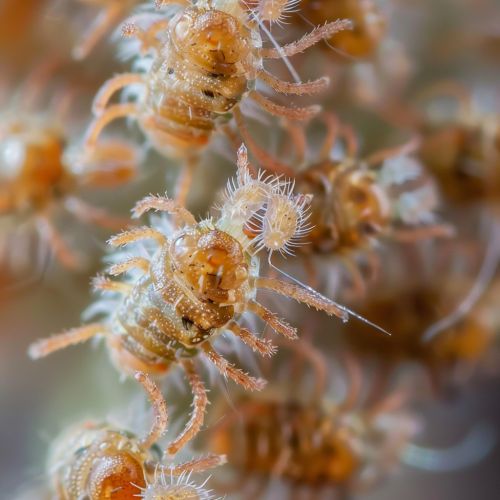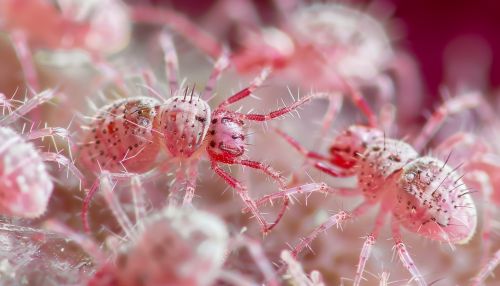Mites
Introduction
Mites are small arthropods belonging to the class Arachnida and the subclass Acari (also known as Acarina). They are among the most diverse and successful of all the invertebrate groups. They have exploited an incredible array of habitats, and because of their small size (most are microscopic), go largely unnoticed. Many live freely in the soil or water, but there are also a large number of species that live as parasites on plants, animals, and some that feed on mold.


Classification and Diversity
The subclass Acari is divided into two superorders, the Acariformes and the Parasitiformes. The Acariformes are often regarded as the more primitive mites, while the Parasitiformes are viewed as more advanced. The Acariformes are the most diverse of the two, with over 32,000 known species, while the Parasitiformes boast over 17,000 known species. These numbers, however, represent only a fraction of the true diversity of the mite group, as many species remain undiscovered and undescribed.
Anatomy and Physiology
Mites, like all arachnids, have bodies divided into two main sections: the cephalothorax (also known as the prosoma) and the abdomen (or opisthosoma). The cephalothorax is covered by a hard protective covering called the carapace, and it bears the mite's eyes, mouthparts, and four pairs of legs. The abdomen is softer and more flexible, and it contains the mite's digestive and reproductive organs.
Ecology and Behavior
Mites occupy a wide range of ecological niches. Some species are predators, feeding on other mites and small invertebrates. Others are detritivores, consuming decaying organic material. Still others are parasites, living on or in the bodies of plants or animals and feeding on their tissues. Some parasitic mites are vectors of disease, transmitting pathogens from one host to another.
Impact on Humans
Mites have a significant impact on human societies. Some species are pests of agricultural crops and stored food products. Others are responsible for several types of skin disorders, including scabies and dermatitis. Some mites are beneficial, playing important roles in soil fertility and the decomposition of organic matter.
